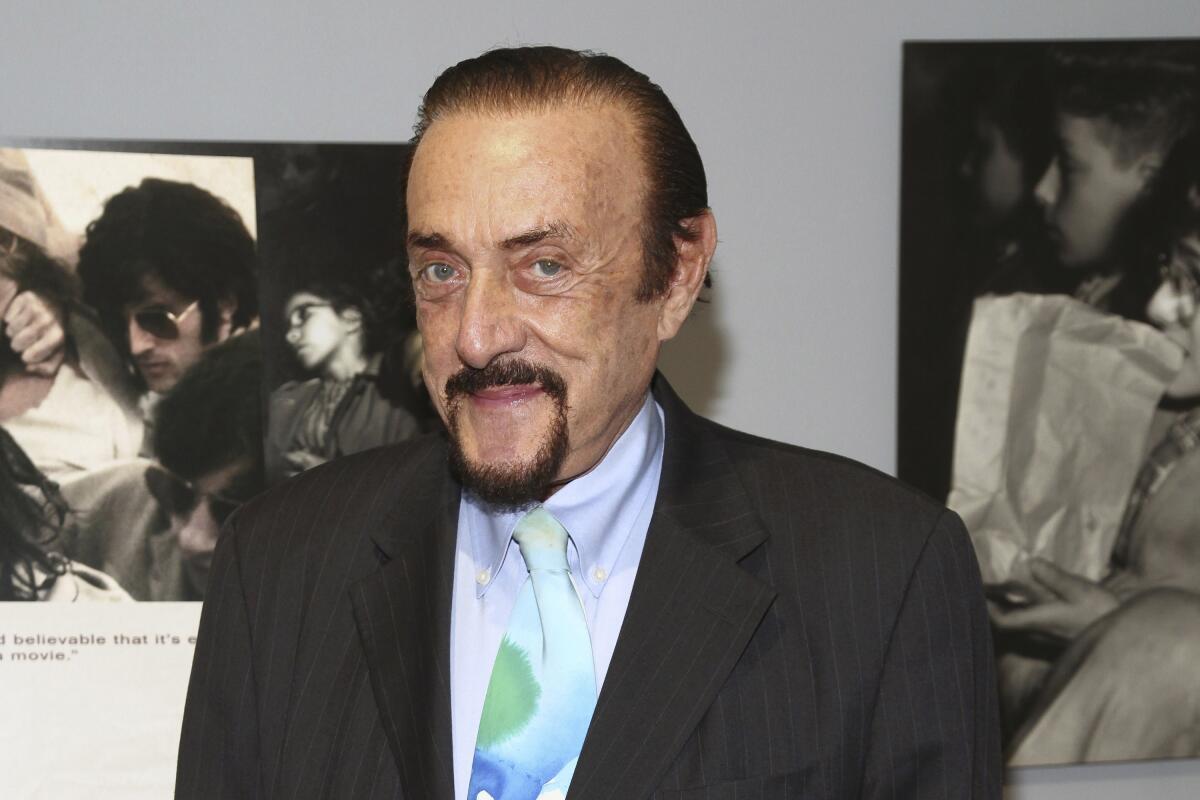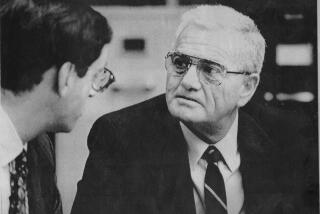Psychologist Philip Zimbardo, architect of the âStanford Prison Experiment,â is dead at 91

The rationale was clear.
âMost people go about their daily life assuming that they have more control over their behavior than they actually do,â wrote a young psychology professor at Stanford University in 1971. âWe are often unaware of the tremendous power which social situations exert upon us to shape, guide, and manipulate our behavior.â
To prove these statements, the professor devised an experiment.
Together with 24 male graduate students, he built a prison in the basement of one of the universityâs buildings. Its cells measured 6 feet by 9 feet. By a coin toss, students were divided into prisoners and guards. The professor was the warden.
Within a day, the students (âseemingly gentle and caring young men,â as they were later described) found themselves pitted against one another. The guards became mean and tyrannical, the prisoners sad, angry and withdrawn.
The study was intended to last for two weeks. It was shut down after six days, but its implications have had a profound effect ever since.
Chief architect of this landmark and controversial study â known as the âStanford Prison Experimentâ â was Philip G. Zimbardo, who died Oct. 14 at his home in San Francisco, according to Stanford University. He was 91.
Praised as âone of the most prolific and influential psychologists of his generationâ by a Stanford colleague, Zimbardo was also criticized for the active, non-objective role he played in the experiment. But although his methodology was questioned, he opened the door to a generation of social scientists for the analysis of often subjective and inchoate aspects of human emotion and behavior.
Intrigued by shyness, Zimbardo founded the Stanford Shyness Clinic to uncover the roots of anxiety, panic and social phobia. Intrigued by altruism, he established the Heroic Imagination Project, devoted to the belief â in his own words â that âeach and every seemingly ordinary person on this planet is capable of committing heroic acts.â
He was president of the American Psychological Assn. in 2002 and, after retiring, was honored for his volunteer service to Stanford. He was the recipient of the 2006 Havel foundation prize for outstanding work in the field of science and awarded the Richard W. Lyman Award for his âcontributions to the development and integration of psychological research and social action.â
Born in New York City on March 23, 1933, Zimbardo grew up in the Bronx. Eldest of four children, he attended Brooklyn College and Yale University, where he earned a masterâs degree in experimental psychology and a doctorate in social psychology. After teaching at New York University and Columbia University, he joined the Stanford faculty in 1968.
At the time, psychology was an increasingly popular and influential field of inquiry. The writings of Erik Erikson, R.D. Laing and D.W. Winnicott were rapidly changing presumptions about the development of the human mind.
Zimbardoâs âIntroduction to Psychologyâ class was so popular that lines of students trying to get admitted often formed outside offices and ran into the university quadrangles.
Arguing that social structures â from the workplace to schools, neighborhoods to marriages â can affect a range of behavior, Zimbardo showed that when people felt anonymous and superior and believed they could act with impunity, they would disregard the well-being of others.
As a young researcher, he once parked a beat-up car in a middle-class suburban neighborhood of Palo Alto, and during three days of observation, noticed that the car was left untouched. Destructive behavior, he concluded, is discouraged by a sense of community and a feeling of social disapproval.
Conversely, destructive behavior proliferates in communities that condone it.
After the 1978 mass murder and suicide of 909 people in the Jonestown settlement in Guyana directed by the charismatic leader Jim Jones, Zimbardo explored the social dynamics of cults. After calls for inquiry into the abuse of Iraqi prisoners by American soldiers at the Abu Ghraib prison, Zimbardo was named to the commission.
His work has continuing implications for the study of âextreme forms of influence,â such as terrorist recruiting, cults and âhuman malleability or resiliency when confronted by authority power.â
âUnderstanding the dynamics and pervasiveness of situational power is essential to learning how to resist it,â he wrote in 2002, âand to weaken the dominance of the many agents of mind control who ply their trade daily on all of us behind many faces and fronts.â
But his work in the mock prison in the basement of a building on the Stanford campus defined his reputation.
Writing 25 years after the Stanford Prison Experiment, he and co-author Craig Haney, a fellow researcher in 1971, were candid about how âshocking and unexpectedâ the outcome was: transforming âmost of the participants in ways we did not anticipate, prepare for or predict.â
As much as the academic community and general public were left reeling by their conclusions, Zimbardo understood their importance for showing that psychological research could be applied to everyday life and understood and appreciated by nonprofessionals.
He passionately argued that psychology was relevant to the national dialogue about crime and justice and deplored the âpoliticians and policymakers [who] now seem, to worship the very kind of institutional power whose adverse effects were so critically evaluated over the past 25 years.â
By applying the methods and theories of modern psychology to the contextual origins of crime and the pain of imprisonment, he hoped for âgenuine and meaningful prison and criminal justice reform.â
âThere has never been a more critical time at which to begin the intellectual struggle with those who would demean human nature by using prisons exclusively as agencies of social control that punish without attempting to rehabilitate, that isolate and oppress instead of educating and elevating, and that tear down minority communities rather than protecting and strengthening them.â
More to Read
Sign up for Essential California
The most important California stories and recommendations in your inbox every morning.
You may occasionally receive promotional content from the Los Angeles Times.









![[20060326 (LA/A20) -- STATING THE CASE: Marchers organized by unions, religious organizations and immigrants rights groups carry signs and chant in downtown L.A. "People are really upset that all the work they do, everything that they give to this nation, is ignored," said Angelica Salas of the Coalition of Humane Immigrant Rights. -- PHOTOGRAPHER: Photographs by Gina Ferazzi The Los Angeles Times] *** [Ferazzi, Gina -- - 109170.ME.0325.rights.12.GMF- Gina Ferazzi/Los Angeles Times - Thousands of protesters march to city hall in downtown Los Angeles Saturday, March 25, 2006. They are protesting against House-passed HR 4437, an anti-immigration bill that opponents say will criminalize millions of immigrant families and anyone who comes into contact with them.]](https://ca-times.brightspotcdn.com/dims4/default/34f403d/2147483647/strip/true/crop/1983x1322+109+0/resize/840x560!/quality/75/?url=https%3A%2F%2Fcalifornia-times-brightspot.s3.amazonaws.com%2Fzbk%2Fdamlat_images%2FLA%2FLA_PHOTO_ARCHIVE%2FSDOCS%2854%29%2Fkx3lslnc.JPG)

